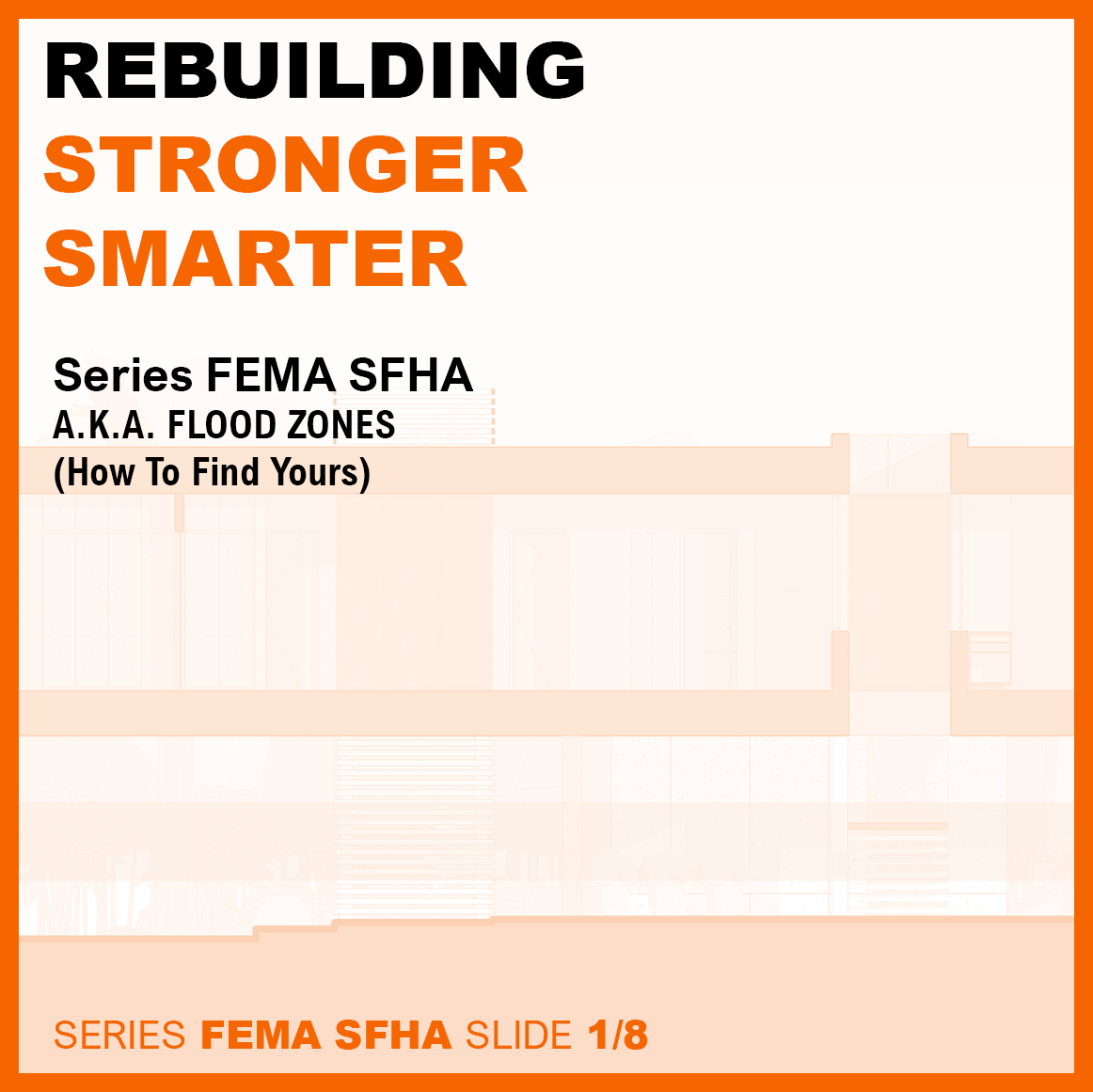FEMA SFHA (Flood Zones)
Series FEMA SFHA (Flood Zones) — AJO’s REBUILDING STRONGER SMARTER SERIES
Our series of "Rebuilding Stronger Smarter" focuses on the "smarter" aspects of architecture and construction.
In the process of figuring out the best way to build (or re-build) your home, the first step is to find your flood zone. This process can be complicated, but this series on FEMA Flood Zones is here to help walk you through it.
Scroll to learn more about FEMA Flood Zones and how to find yours.
Step 1: Type Your Home Address
Step 1 is easy. Just go online to the FEMA Map Service Center and enter your full home address in the search box.
It should be formatted without commas, using a 2-digit abbreviation for the state.
Note on Flood Zone Abbreviations
There are a bunch of different categories for FEMA flood zones, but the two to pay attention to are those that start with A or with V.
If your home is located in Zones A or V, then you're located in what's called a "Special Flood Hazard Area."
That means the 50% Rule applies to you. Check out our post on the 50% Rule for more information.
Step 2: Flood Zone Map
After you've entered your address into the FEMA Map Service Center website, it should show you a map with colored areas.
The aerial can be a bit difficult to read, but you'll be looking for a note that says "Zone __ (AE, VE, etc.)" with a number below it (written like EL. #).
That is your flood zone indicator. Go onto Slide 5 to learn how to read that indicator.
Step 3: Flood Zone Indicators
The Flood Zone Indicators convey two important pieces of information:
1. Your Flood Zone Type. If it reads "Zone AE" or "Zone VE", the 50% Rule applies to your property. If it reads "B", "C", or "X", then it means you're in a low-hazard area, in which the rules for building and re-building are less restrictive.
AND
2. Your elevation number. This is the height above sea level that FEMA requires your new house or re-built house be built at or above.
Step 4: Elevation Certificates
The next step involves finding what the existing elevation of your home is. If your home is located in a flood zone, then you will have been provided with an elevation certificate when you purchased the house. It will tell you your elevation above sea level, read as "Top of bottom floor = ___ feet."
For example, if your elevation certificate says that the "Top of bottom floor" is 1.1 feet, and your flood zone is "Zone AE El. 7", then if you re-build the home (or if you trigger the 50% Rule), then the house will have to be raised from 1.1 feet up to the flood zone elevation.
If you can't find your elevation certificate, reach out to your local government. They will have a certificate on file.
Step 5: Free-Board Elevation
Here in Florida, the process of raising your home to the FEMA flood zone elevation includes something called the "Free-Board" elevation.
In Lee County, for example, the "Free-Board" elevation is 1 foot. That means that your new-construction or re-built home has to be raised to the FEMA elevation (for example, EL. 7) + 1' (Free-Board)...8' above sea level.
Verify with your local jurisdiction, as the "Free-Board" elevation can vary.
FEMA Flood Zones Recap
The process of determining your flood zone and its implications for your home is complicated. Just remember these rules:
IF your house is in a flood zone beginning with A or V,
AND your house has to be elevated (either because of the 50% rule, or because you are re-building your house).
AND your elevation certificate shows a number that is BELOW the FEMA Elevation + Free-Board...
Then the first floor of your house has to be raised at least to the FEMA Elevation + Free-Board elevation.
Remember that any construction you do must also comply with all of the current local and state building code regulations.









